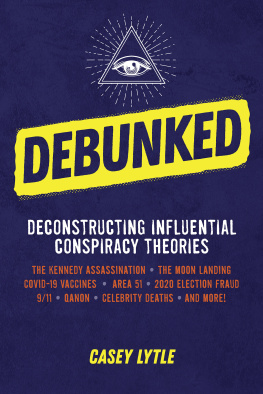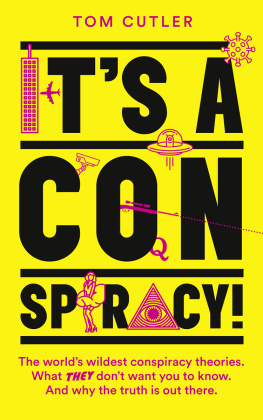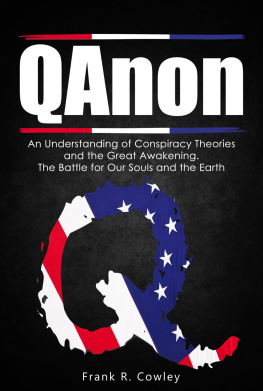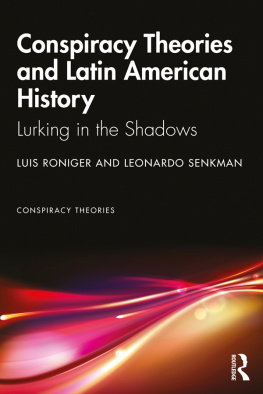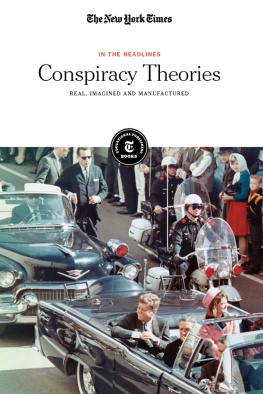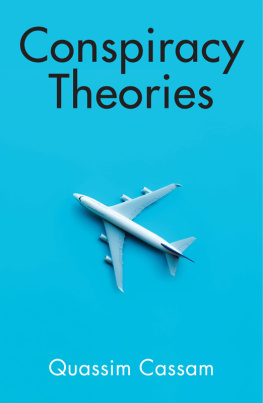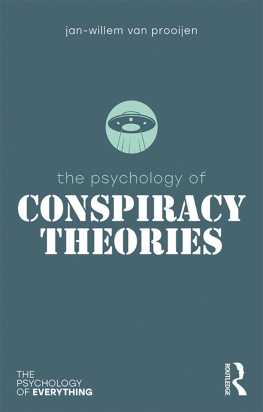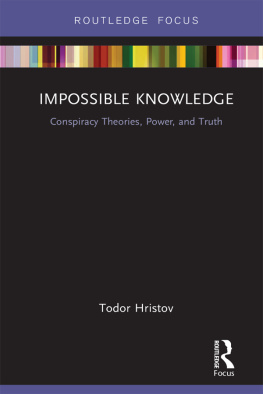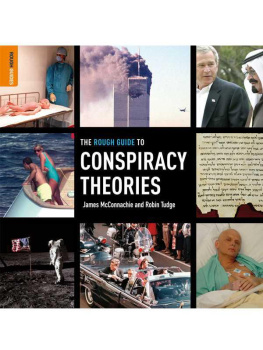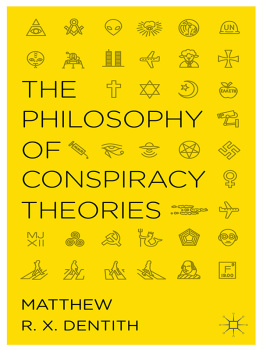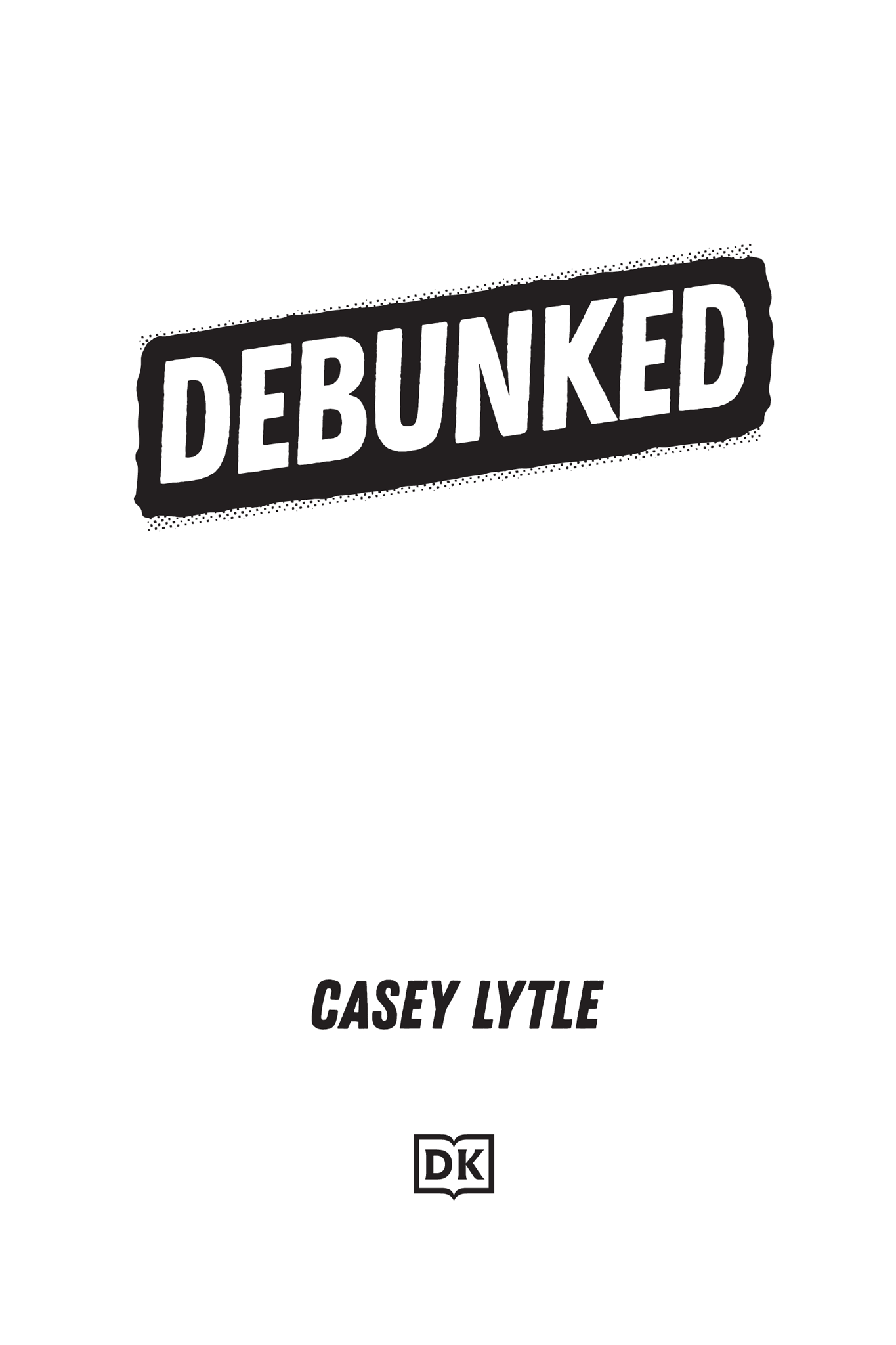Contents
Landmarks
Contents
g
How to use this eBook
Preferred application settings
For the best reading experience, the following application settings are recommended:
- Orientation: Portrait
- Color theme: White background
- Scrolling view: [OFF]
- Text alignment: Auto-justification [OFF](if the eBook reader has this feature)
- Auto-hyphenation: [OFF](if the eBook reader has this feature)
- Font style: Publisher default setting [ON] (if the eBook reader has this feature)
- In Settings, change the font size to a size you are most comfortable with.
- Double-tap image to see the details clearly.
g
introduction
Conspiracy Theories: Why Do They Fascinate Us?
Why write a book about conspiracy theories? Because theyve become so influential and spread to sometimes irrational extremes. Is there a way to separate the possible from the impossible? Yes. This book does that.
Conspiracy theories have been around forever. They flourish every time theres a national or cultural crisis, especially in times and places where people are suspicious of their own governments. As Ill discuss in the , these beliefs are fueled when real secret operations that have been carried out are revealed to the public despite efforts made to keep them secret.
Historically, conspiracy theorists were mostly small and isolated groups. Think of the Lone Gunmen as represented on the 1990s TV show The X Files and their own brief spin-off show. In the last couple decades, the internet has brought these conspiracy groups together and given them a much larger platform. The larger the platform, the more a belief can spread. Now there are conspiracy theories surrounding almost every major national or global event.
Conspiracy theories started to explode in the 1970s because of two real-world events: the Kennedy assassination and Watergate. Both cases resulted in many documents becoming declassified and many previously secret operations becoming public knowledge. As you can imagine, real cover-ups will open the door for beliefs in other secret operations that havent yet become public knowledge. Does that mean every conspiracy theory is valid? Not at all. So how can you be an intelligent consumer of alternative theories? I hope to give you a hand there.
When I first began teaching a general psychology course, a frequent question Id get from students was: What causes people to believe in conspiracy theories and why do some people get so aggressive in defending their beliefs? The interest and excitement in the class over these questions eventually led to Psychology of Conspiracy Beliefs becoming its own section in my psychology and sociology classes. This led to a second common question: How can I cut through the bull and figure out which conspiracies could be true and which ones are completely ridiculous? This question led to the format youll find in this book: putting conspiracy theories on a spectrum from possible to impossible and using a project management approach to decide where on the spectrum theyd land.
What do I mean by project management? I mean considering the conspiracy from a practical standpoint and thinking about what it would take, step-by-step, to carry it out. How many people would be needed? What records would have to be fabricated? How many people would it take to infiltrate and fake those records? And, most importantly, whats the goal of the conspiracy and is the suggested conspiracy the best way you could think of to achieve the goal and expect success? Are there much easier ways to carry out the same goal that would involve fewer people and have a better chance of success? These are the questions conspiracy theorists avoid thinking about and these are the questions Id ask the class as we brought up the conspiracy theories youll find in these pages.
Ive selected several popular and controversial conspiracy theories and dedicated a chapter to each one. In each chapter, well start with the official description of the event and then describe the conspiracy theories surrounding it. Then well take a practical approach to what might be required to carry out such a conspiracy and consider what the assumed goal of the conspiracy is.
If theres a wide spectrum of conspiracies (such as around the 9/11 attacks), Ill place them on the spectrum from possible to impossible and describe why theyd be at those points on the spectrum. (Did the Twin Towers really look like a controlled demolition? Would jet fuel have to melt steel for the towers to collapse? What would it take in hours and people to secretly plant enough explosives to bring the buildings down without being discovered and without being set off by the impact or fires from the planes?) Ill then include some of the alternative ways the goals could have been achieved in a more practical way that had a greater chance to succeed.
If your interest in conspiracy theories is the psychology behind why people believe them and cling to them so powerfully, Ill hit that right away in the , where I lay out the project management approach well take in the book and the psychological foundations that make conspiracies so appealing as well as some of the real events that were initially covered up, suspected and speculated by conspiracy theorists, and later discovered to be true. After that, well dedicate each chapter to a breakdown of a specific event and the conspiracies around it.
By the end of Debunked , youll be a more rational consumer of information and have a greater understanding of those who are drawn to these extreme conspiracy theories.
With that, lets buckle up and go for a ride!
g
Chapter 1
The Spectrum of Conspiracy Theories & the Project Management approach
The Spectrum
When I put conspiracy theories on a spectrum from likely to unlikely or possible to impossible, the most frequent question I get from students is: Are there any easy indicators of where a conspiracy falls on that spectrum? The answers are Yes and Sometimes.
As well see in later chapters, many conspiracies will start with a rational base and then be very subtle in sneaking irrational or impossible support into the argument. Part of what fuels this is the same cognition that allows us to use the suspension of disbelief to enjoy movies and books that sometimes violate the real world. On a rational level, we know the hero cant fall 10 floors from a building and simply roll around in pain for a moment and then 5 minutes later theyre unhurt and active. But we set this aside so we can continue to enjoy the movie. The effect of movies and TV and their use of suspension of disbelief will play a large role when we talk about the 9/11 conspiracies, which rely heavily on our belief in fictionalized disasters (such as building collapses) we see in movies.
Other conspiracies will start with a claim thats false and use it as the foundation for the rest of the conspiracy. This is a logical fallacy known as the false premise fallacy. Its unfortunately very common and very effective. For example, we could claim its impossible for humans to travel to the moon because radiation would kill them; therefore, the moon landing had to be fake. The premise that radiation would kill travelers to the moon is false and thus cant invalidate the moon landing.

